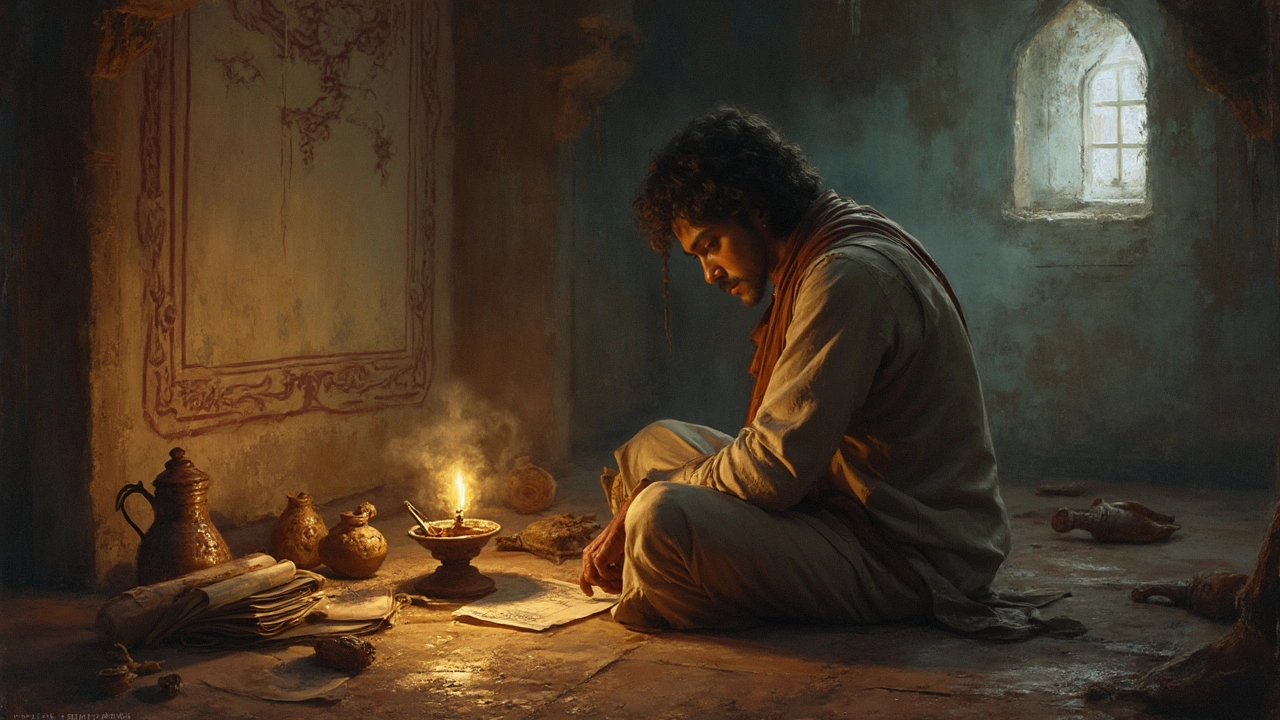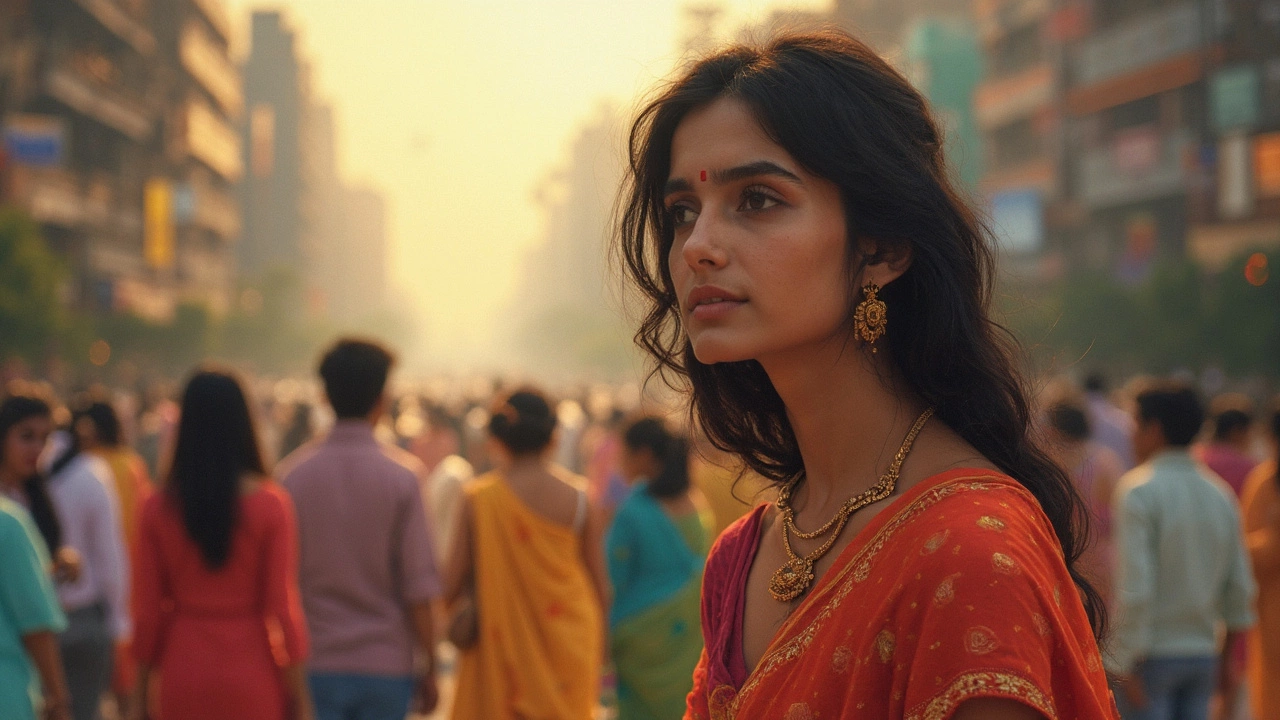Exploring the Depths of Heartache: India's Poetic Take
 Mar, 26 2025
Mar, 26 2025
What's the most painful emotional feeling ever? Ask anyone and heartbreak might top the list. Not surprisingly, Indian poets have been weaving tales of heartbreak and unrequited love for ages. They capture the profound sadness that seems to break the very core of one's soul. But why does heartbreak hurt so much, and why does sad poetry resonate with us?
Heartbreak isn't just a dramatic phrase; it manifests physically too. Studies show that emotional pain activates the same areas in the brain as physical pain. This overlap reveals why a broken heart can feel as real as a broken bone. Imagine going through that and finding solace in words that echo your pain. That's the magic poets deliver.
Indian poetry, through its nuanced metaphors and rich imagery, paints heartbreak in colors vivid and relatable. It's not uncommon to find solace or validation in verses written centuries ago. These poems remind us that while experiences of love and loss are deeply personal, they're also universally human.
- The Weight of Heartbreak in Poetry
- Cultural Perspectives on Emotional Pain
- How Poets Portray Pain
- Coping Mechanisms for Heartache
The Weight of Heartbreak in Poetry
Heartbreak is a universally recognized concept, but the way it's expressed through sad poetry in India strikes a unique chord. Ever wondered why poets seem to focus so much on heartbreak? Simple. It's one of the most intense human emotions, and poetry provides a soft cushion to experience and express it.
Indian poetry, from ancient times to modern days, has always leaned heavily on themes of love and loss. Take for example Mirza Ghalib, a renowned Urdu poet whose ghazals often explored the futile chase of love. Or Rabindranath Tagore, who beautifully captured the pain of longing and separation in his works. These poets managed to make readers feel every ounce of their emotional pain.
Why Heartbreak Resonates So Deeply
Why does it feel like poets and readers are drawn magnetically to the theme of heartbreak? Perhaps it’s because this emotional state is all-consuming and relatable. In fact, some studies suggest that the pain of heartbreak can trigger the release of stress hormones much like a traumatic physical injury.
Moreover, the cultural context in India magnifies these emotions. Social hierarchies and arranged marriages often complicate romantic relationships, contributing to the persistent feeling of unrequited love. This adds layers of complexity to Indian sad poetry, making it even more resonant.
Historical Perspectives
Fast forward to recent times, where we see that modern poetry still echoes these age-old sentiments but with a contemporary twist. The legacy of heartbreak in poetry has evolved, including elements of personal freedom and self-identity while maintaining the core of emotional depth.
It's fascinating how something as abstract as emotional pain gets trapped in words and creates a shared human experience. That’s the weight and wonder of heartbreak captured in poetry, making it timeless and boundless.
Cultural Perspectives on Emotional Pain
Emotional pain, particularly heartbreak, cuts across cultures, but how people express and manage it varies widely. In India, emotional experiences like heartbreak are often intertwined with cultural and social expectations.
In Indian society, family and community are vital. This cultural emphasis means that emotional struggles, like heartbreak, are not just personal issues but are woven into a larger social fabric. This can sometimes make heartbreak not only painful on a personal level but also carry a societal stigma, adding to the pressure of handling such feelings.
The Role of Art and Literature
Indian literature and poetry often reflect these cultural nuances. Texts like the ancient poems in the 'Anthology of Love' from Tamil Nadu highlight love's tumultuous journey, combining personal longing with societal commentary. When poets express their emotional pain through words, they provide an outlet for collective emotions, making private pain a shared experience.
Moreover, Bollywood, with its plethora of films on love and loss, deeply influences the cultural understanding of these emotions. Songs depicting lovesickness have become anthems, resonating with people who feel the sting of heartbreak.
Modern Views and Psychological Insights
Though traditional views on emotional pain are rooted in cultural narratives, there's a growing acceptance of psychological perspectives. Mental health awareness in India is shedding light on how emotional pain affects our psyche and how critical it is to deal with it constructively.
Recently, there's been a shift toward understanding that emotional wellbeing is as crucial as physical health. This awareness encourages more open conversations about emotional pain and the importance of seeking help when needed.
Statistics on Emotional Wellbeing
Check out the recent data emphasizing the importance of emotional health:
| Aspect | Percentage |
|---|---|
| People acknowledging heartbreak affects mental health | 64% |
| Increase in mental health discussions in media | 22% |
This table highlights how heartbreak isn't just about sadness; it's tied to wider cultural and mental health discussions. Knowing how culture defines these emotions helps us navigate them better. Whether through poetry or modern psychology, understanding these perspectives can provide comfort and clarity.

How Poets Portray Pain
When it comes to expressing emotional pain, poets have a knack for turning raw feelings into art. Whether it's the pang of heartbreak or the sting of rejection, they've got a way with words that makes you feel less alone in your hurt.
Metaphors and Symbols
Poets often use everyday imagery to depict the heaviness of heartache. For example, the legendary Mirza Ghalib, a giant in Indian poetry, often used metaphors like burning fire and unending night to illustrate the endless cycle of love and loss. This kind of language creates powerful images that any heartbroken soul can relate to.
The Element of Universality
It’s common for poets to draw upon universal themes. The feeling of being deserted echoes through the verses of many Indian poets. Take the works of Rabindranath Tagore. His poems can make you reflect on loneliness as if it's a shared human condition, an uninvited guest we all know too well.
The Role of Cultural Context
And let's not forget the huge role cultural context plays in these poems. In India, there's a rich tapestry of cultural references that makes sad poetry resonate differently. Themes of duty, familial expectations, and spiritual beliefs frequently intersect with personal pain, adding depth and dimension.
Stats That Speak
If you're a numbers person, consider this: A study once found that reading poetry can elevate empathy by almost 20%. Now, isn't that incredible? It suggests that engaging with poetry about pain not only validates your experience but also broadens your emotional understanding.
So, the next time you flip through a collection of verses, notice how these poets take a feeling as overwhelming as love's demise and capture it in lines that forever echo—in verses that were written not just to be read, but to be felt.
Coping Mechanisms for Heartache
Dealing with heartbreak can be tough. It often feels like an endless cycle of sadness. But, there’s light at the end of the tunnel. Let’s look at some practical ways you can mend that broken heart and find comfort.
1. Lean on Your Friends and Family
When the going gets tough, your loved ones are your strongest support network. Share your feelings with friends and family. They know you well and can offer perspective, comfort, or even just a shoulder to cry on. Sometimes, just talking about your emotions helps you process them better.
2. Engage with Art and Poetry
Reading and writing sad poetry can be surprisingly therapeutic. Pouring your emotions onto paper gives them a channel to escape. Plus, reading works from those who’ve gone through similar struggles can reduce feelings of isolation.
3. Take Care of Your Body
Physical and mental health are intertwined. While it might be tempting to skip meals or sleep, maintaining a healthy routine is crucial. Exercise releases endorphins, which are nature’s mood lifters. Whether it's a walk in the park or a quick yoga session, moving your body can improve your mood.
4. Seek Professional Help
If you find it hard to move past your emotional pain, it might be time to consult a therapist. They can offer tools and strategies tailored to your unique situation. Remember, there’s no shame in seeking help. It’s a sign of strength, not weakness.
5. Distract and Redefine
Try picking up a new hobby. Whether it’s painting, cooking, or learning a new instrument, diverting your focus can be beneficial. It helps redefine your routine and creates new positive memories.
Remember, it’s okay to feel down. Heartbreak is a part of life, but it doesn’t define it. With patience and the right tools, you can get through this stronger and more resilient.